Catching My First Wild Trout Fly Fishing in Scotland
I reach the River Don at around 3pm on a July afternoon. With rod and reel set up, I strap my net and bag over my shoulders and head off downstream. I am at Alford, 25 miles north west of Aberdeen, where the Don snakes erratically eastwards across relatively flat farmland.
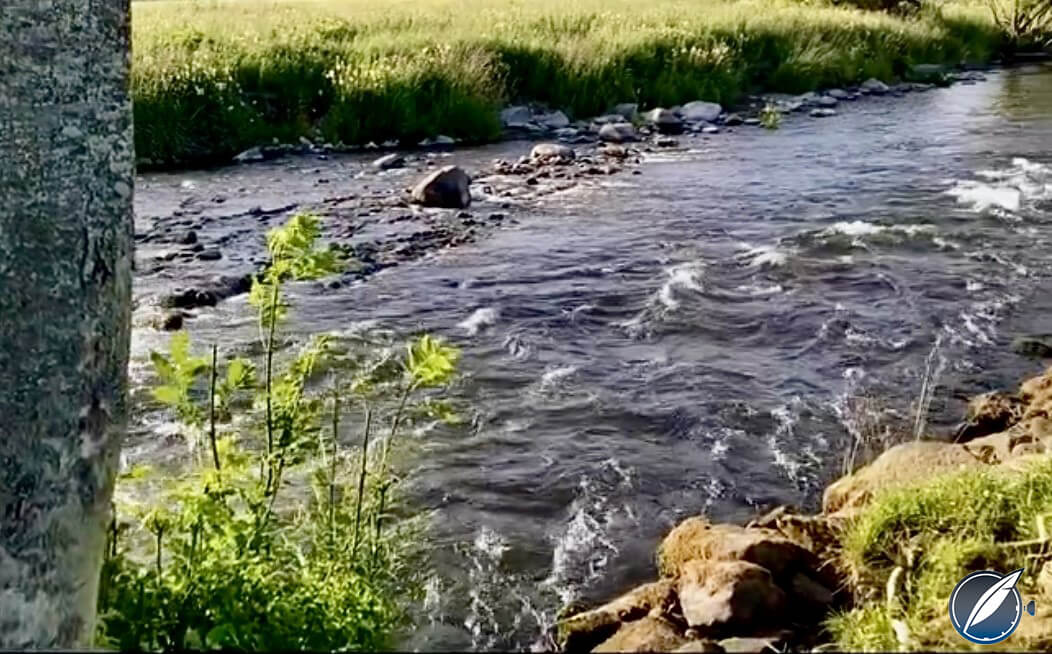
The river Don at Alford
To the west, the terrain becomes increasingly hilly and forested, against the dramatic backdrop created by the bluish peaks of the Cairngorms.
I join the river on a bend with a large pool upstream of me and a fast, 50 yard run of seething water below me. A local club member later tells me that a fellow member landed a 6lb salmon there last week on a 10’ single-handed rod and nymph.
I make my way half a mile downstream, intending to work my way back up to the car and perhaps explore further upstream to the limit of the Alford beat.
The water is crystal clear, unusually so, and at one point I see a wary trout skittering away from me as I pass above it on the bank.
This is my second visit to this beat, a previous session with dry flies two weeks earlier having proven fruitless in spite of the clear evidence of surface feeding trout, even in the bright sunshine.
Water levels are a little lower this time, so I make for the bottom end of a 70-yard long shallow stretch on the right bank where I can wade comfortably in wellingtons, and from which I will be able to cast into a deeper run on the opposite bank beneath a row of overhanging trees.
After that, I will work my way upstream through a series of broader, calmer pools.
Unlike my previous visit, there is little in the way of surface activity, but I know the fish are there. A catch-less day on a river is not a day wasted; it is a day well spent if it lays down knowledge for the future.
The afternoon sun is at its brightest, and I am dressed in a T-shirt and lightweight outdoor trousers, something of a rarity when fishing in Aberdeenshire.
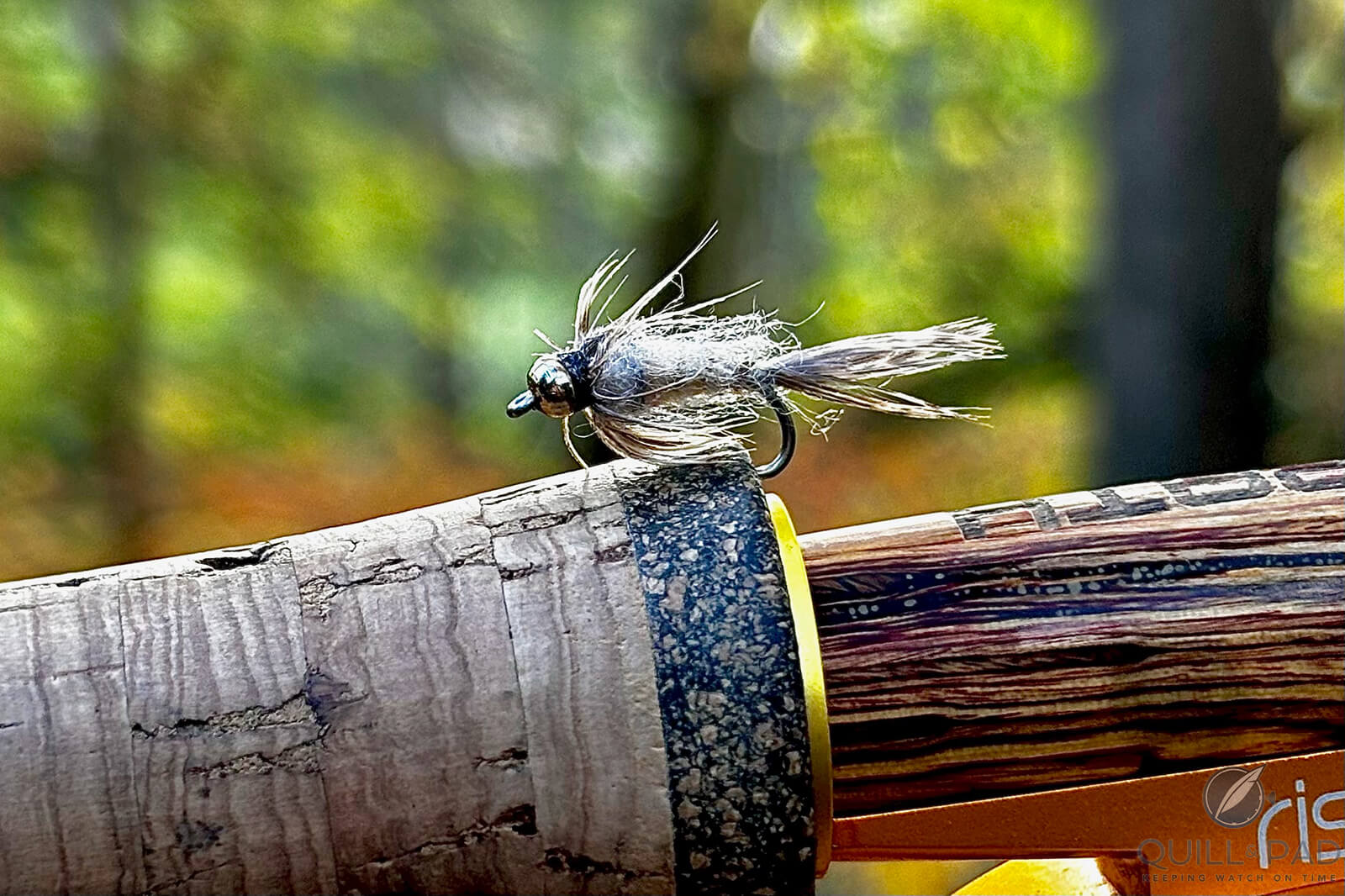
A pheasant’s tail nymph fly fishing lure
Assuming that the fish are feeding lower in the water, I attach a large, barbless beaded pheasant’s tail nymph to my tippet and cast into the top of the run, lifting my rod tip to reduce the amount of line on the water to slow the nymph’s progress.
————————————————————————————————————–
—————————————————————————————————–
On the third cast, the nymph hits the water with a distinct plop at 10 o’ clock relative to my position and at 1 o’ clock there is a sharp tug on the line; as I instinctively set the hook, a glint of gold and brown breaks the surface of the water.
It is not a big fish, less than half a kilo/1lb, but it thrashes vigorously as I reel it in across the pool to my net. Its colouring is quite stunning, very dark brown on the top fading through black and red spots on its sides, underlined by a streak of gold.
I slip the hook out without removing the fish from the net and ease it back into the water, whence it shimmies seductively back to its underwater lair.
I have just caught my first wild trout.
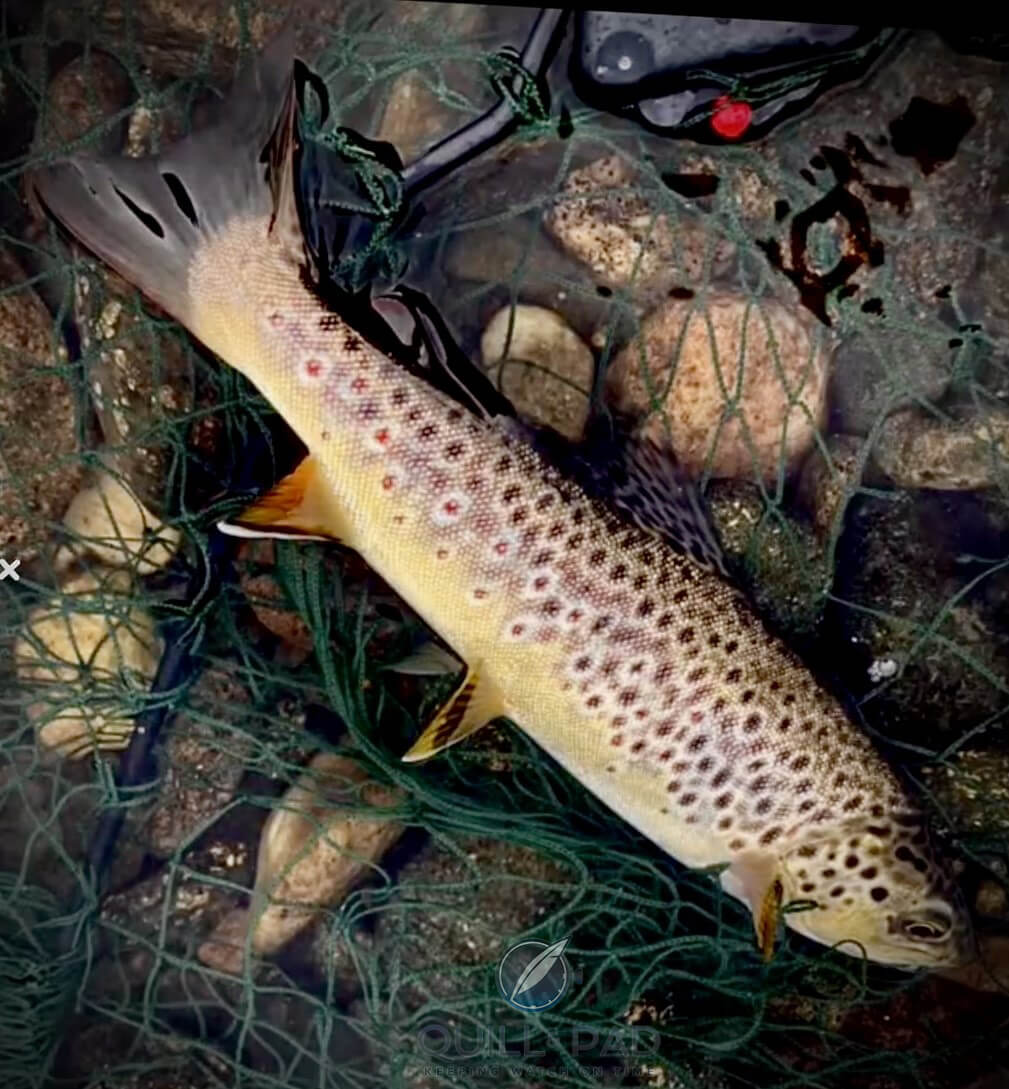
A typical River Don “broonie” brown trout
Scotland’s Divas
The names of the Aberdeenshire rivers Don and Dee were first recorded in the second century AD, by Greco-Roman cosmographer and geographer Ptolemy, respectively as Devona (Δηουανα) and Deva (Δηοῦα), both of which mean goddess (the Welsh river Dee shares the same etymology).
The region is peppered with some 150 stone circles dating back 4,000 years, around half of these featuring a 20-tonne “recumbent” stone, unique to the region, one of which appears to have been abandoned mid-stream just upstream of where I am fishing at Alford.
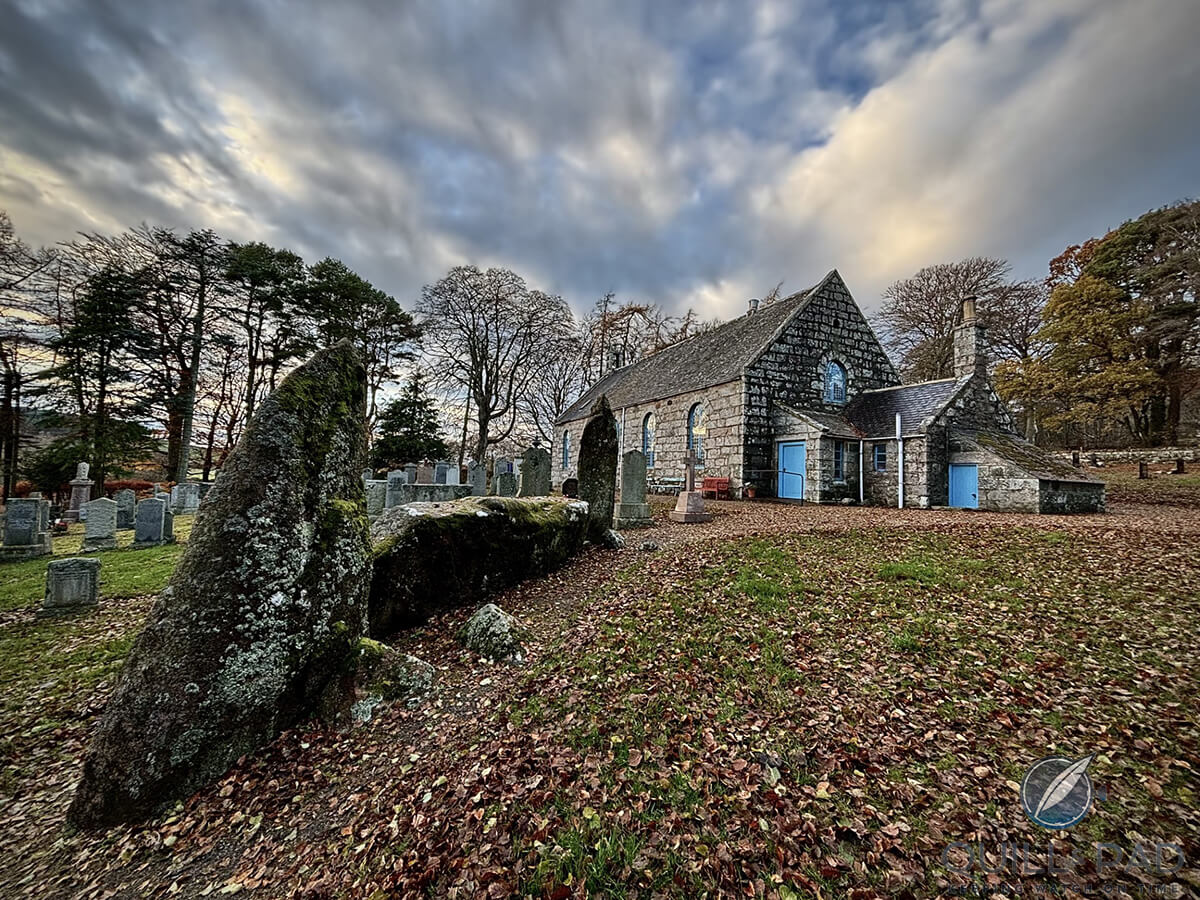
“Recumbent” stone in the stone circle at Midmar
It is not hard to imagine that the Devona and the Deva played a major part in the lives and livelihoods of the builders of these stone circles, to the point of acquiring divine status. The two rivers still exert a powerful draw on anglers and tourists to this day.
—————————————————————————————————–
—————————————————————————————————–
I have the good fortune to live a stone’s throw from the Dee, with one of its principal tributaries running tantalisingly across the bottom of my garden, glinting in dappled sunlight or austere beneath winter snows.
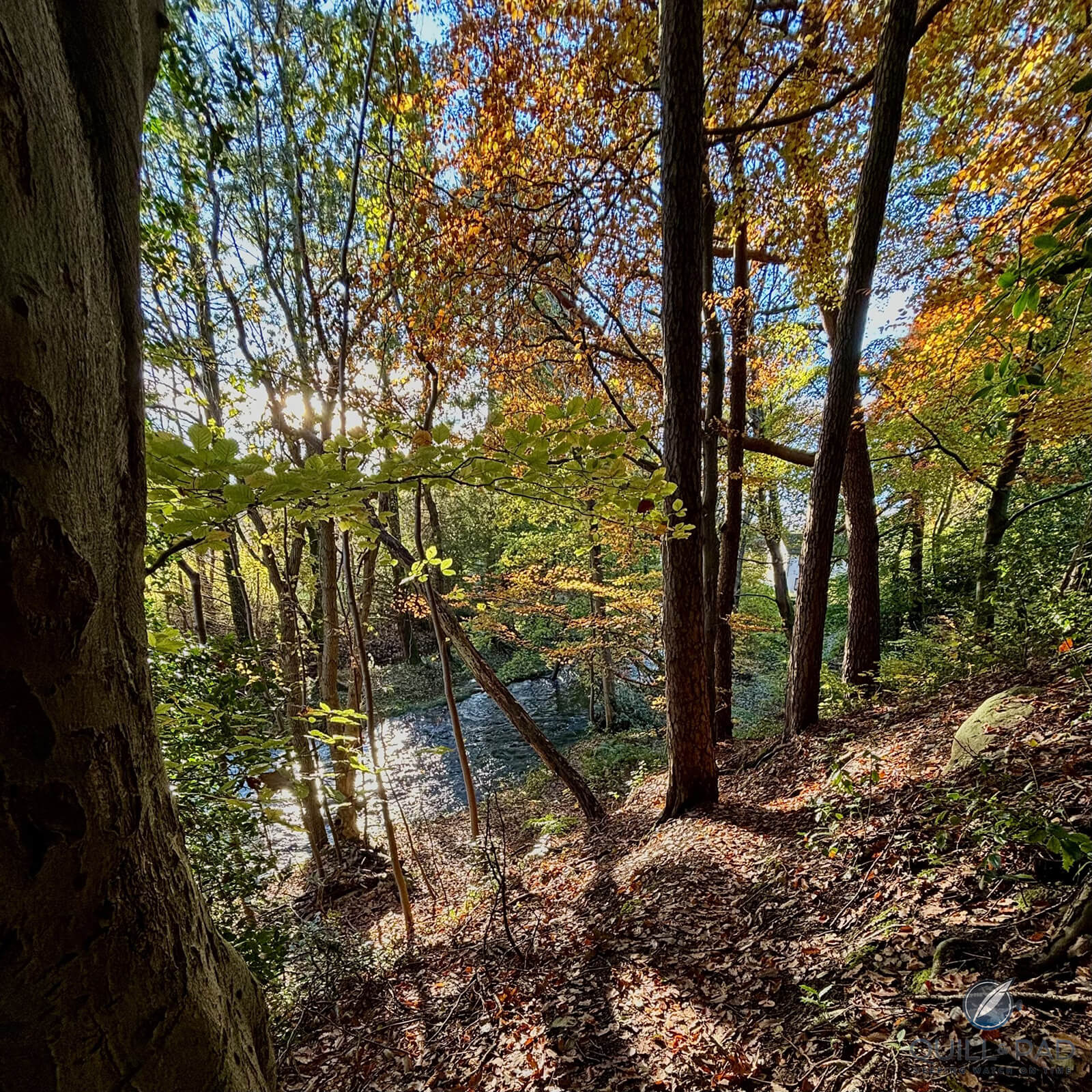
The Culter Burn, a tributary of the Dee
I have seen salmon smolt there in May, leaping three times their own length in pursuit of airborne insects, and there are juvenile brown trout of half a pound or so.
A resident heron spends the winter there, moving to the main river for the spring and summer, a useful indicator as to where the fish are to be found.
I walk or run along the Dee almost every day, downstream from Maryculter House where the Knights Templar were granted land by King William I and subsequently took refuge from Philip IV of France.
I have come to know the pools and runs and how they change with the water levels throughout the year, and have observed the salmon smolt making their way downriver, under constant attack from seals and goosanders.
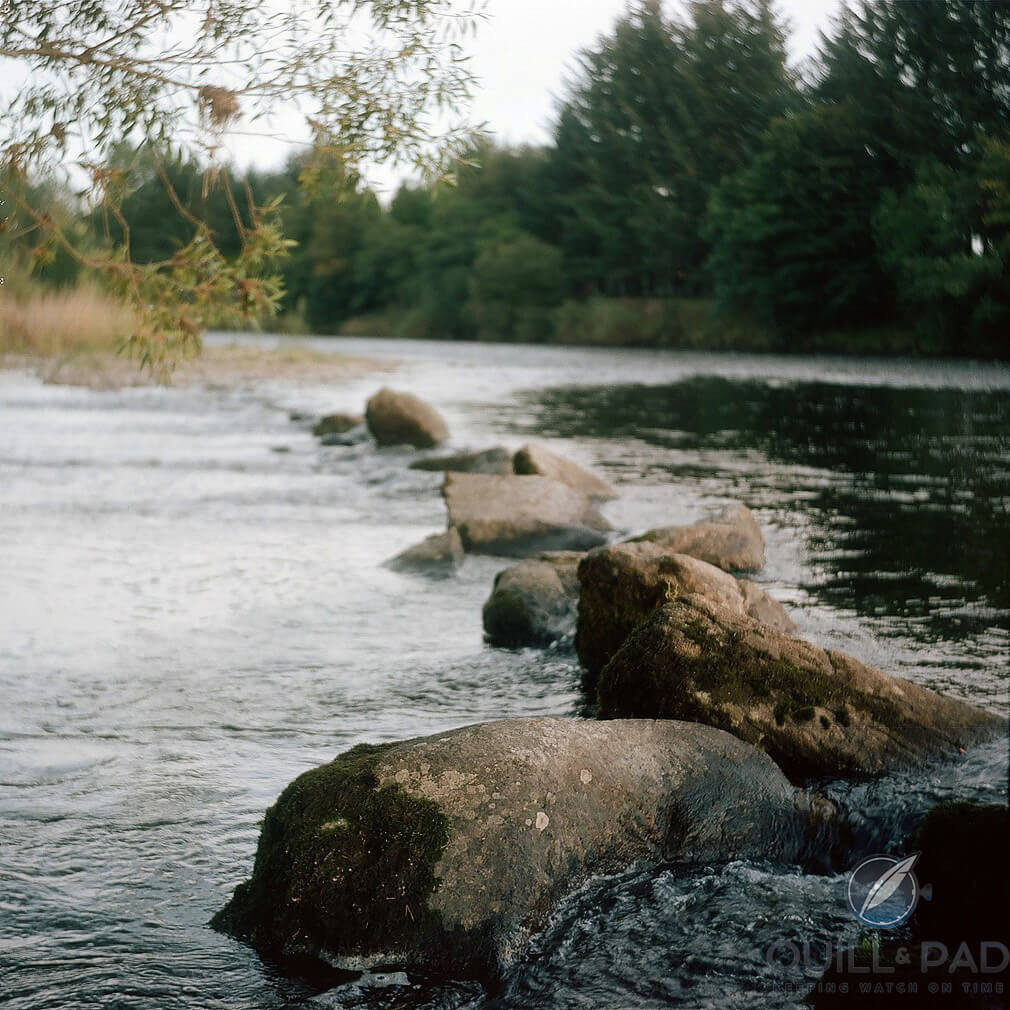
River Dee crossing at Milltimber
As the Dee passes Milltimber, in a shallower area of the river, a 50-yard line of boulders of various sizes departs at a 45-degree angle from the left bank. These may have been placed there by human hands long before bridges were built to ford the Dee, as at lower water levels they offer access on foot to a stony area in the middle of the river, leaving just a deep channel on the tree-laden far bank some 10 yards wide that could plausibly be negotiated on a small raft or ferryboat.
There must be fish lurking on the slower edges of that channel, especially under the trees. Downstream of this there is an island known to locals as Ducky Island, created where a fast-running channel splits from the main river for 100 yards before opening out into a flat pool some 30 yards wide beneath overhanging trees.
There is a small sandy beach where young children play in the summer. The water then spills over a line of rocks into a fast riffle that re-joins the main body of the river in all its grandeur.
In summer, in this pool a dozen or so small trout sip insects continuously from a rich seam of surface detritus that has fallen from the surrounding trees, and one of the local herons is often to be found here, neck outstretched and ready to strike.
—————————————————————————————————–
—————————————————————————————————–
Falls of Feugh
One of the most spectacular sights for anglers and tourists alike can be found further inland. About 100 yards before joining the Dee at Banchory, the Water of Feugh crashes down a ravine made up of a series of steeply angled rock faces and pools.
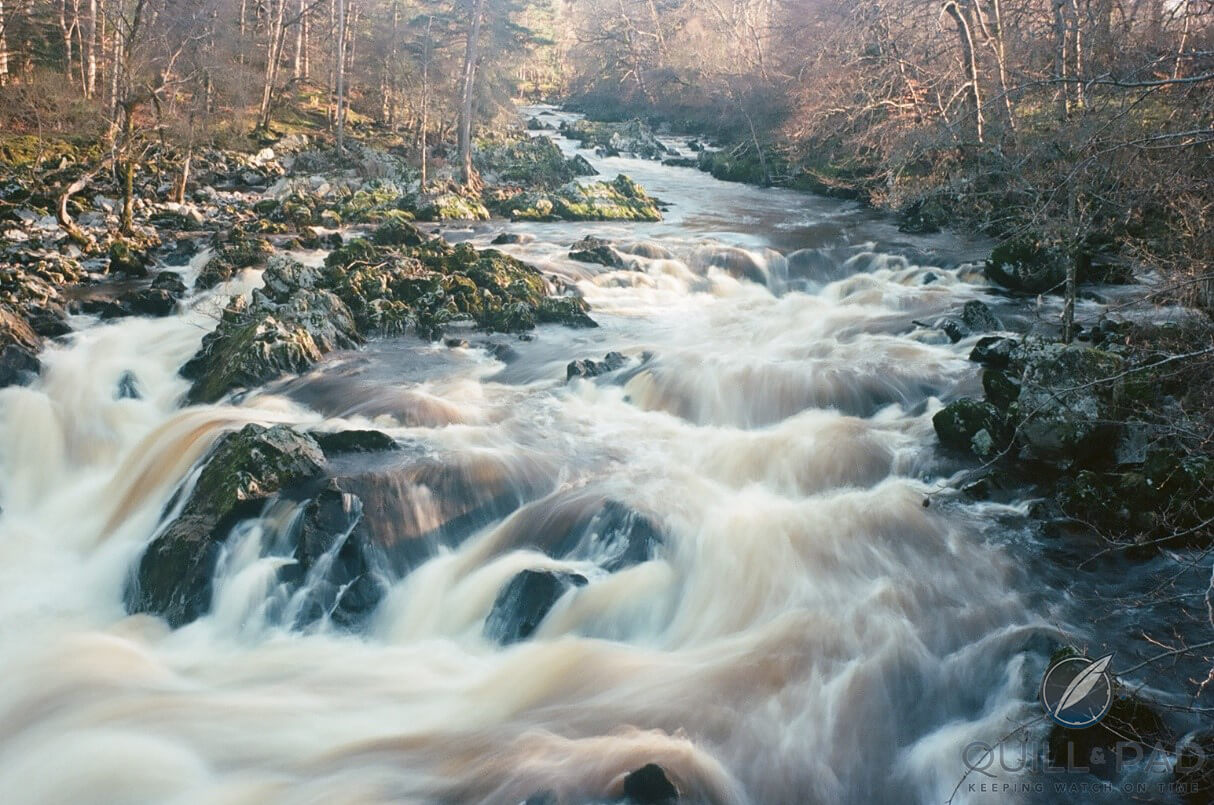
The Falls of Feugh at Banchory
An old stone bridge and a modern viewing platform cross the river, normally about 30ft above where migratory salmon congregate in October each year to make their way up to the spawning grounds.
When the rivers are in spate, however, the water level can rise to the level of the bridge, and the viewing platform was closed briefly in November 2022 as the water was lapping over it.
Observing the salmon there can be engrossing as there is a large, weir-like angled wall of water pouring over a huge rock in the centre of the river, which the salmon try to leap over into the pool above.
But it is too high even for the biggest fish, and it is only after they have figured out that there is an accessible channel up to the left of this rock that they make it to the next level.
Beginnings
I was first introduced to fishing at the age of seven by my father, casting baited hooks on a hand-held spool of line into the Persian Gulf from an oil services jetty.
My father showed me that I would know when I had hooked a fish because I would feel a sharp tug on the line, which I duly noted. After a while of anxiously waiting for the first tug, my attention wandered and I began dreamily gazing off into the horizon, just a few miles beyond which lay the coast of Iran.
My father crept up behind me and gave the line three sharp tugs. I nearly fell off the jetty with surprise, much to his amusement. But his approximation of a large fish taking my hook was remarkably realistic, and I am reminded of it each time I hook a fish today.
I have also noticed recently that more often than not, it is only after I have given up all hope of catching a fish, my attention wanders elsewhere and my retrieve slows almost to a halt, that a trout finally strikes my fly.
We soon progressed to proper rods and reels, and usually brought a couple of sole-like flatfish home for my mother to cook for lunch. My best friend’s father was a professional diver who would take us snorkelling and spearfishing at weekends, also gathering large pieces coral to be sun-bleached and used as decorations.
I shall never forget the overpowering sickly-sweet smell of the heap of dying coral piled up in the back of his car on the way home (in the days before car air-conditioning, or environmental considerations for that matter).
Also, at low tide we used to extract limpets from their shells with a penknife and dangle them on hooks in the rock pools to entice Moray eels from their lairs, a high-risk activity that makes me wince when I think of it.
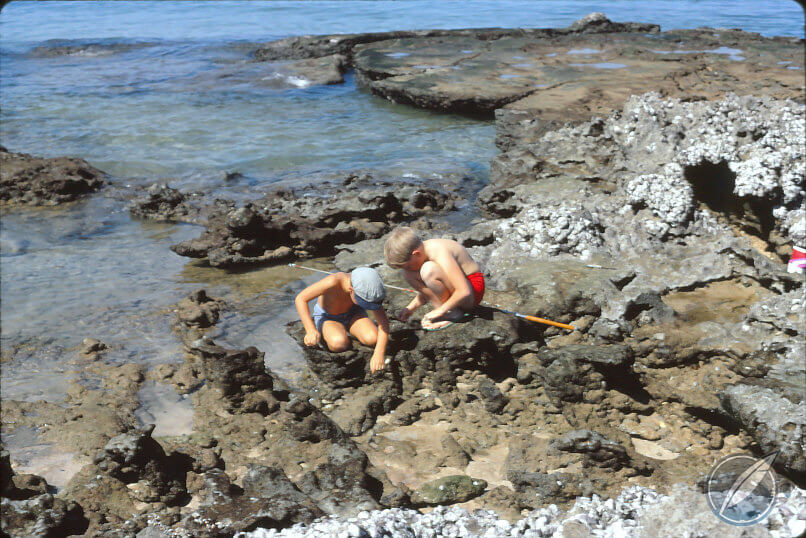
The author hunting Moray eel, c1969. He still has that fishing rod.
—————————————————————————————————–
—————————————————————————————————–
Scotland
Opportunities for fishing of any kind were few and far between in the intervening years, apart from some sea fishing off Arcachon on the south west coast of France, until we relocated to Aberdeenshire’s Deeside at the end of 2022 and I was able to start fly fishing on a regular basis.
I got off to a good start by booking a casting lesson through Twin Peakes Fly Fishing at Crathes, with a soft-spoken young lad who told me that he originally hailed from Ayrshire where his father had taught him to fly fish.
It was only several months later that I realised that my tutor was Blaine Lyon, the reigning spey casting world champion, capable of launching a fly an astonishing 124.5m! I am not convinced that much of his genius rubbed off on me that day, but I live in hope.
Apart from that, I have learned pretty much all I know about fishing the fly since January this year at one of the several trout fisheries located within a 20-minute drive from home, fed by a local burn on its way to join the Dee.
Stillwater trout fisheries can be rather daunting on first impressions, especially in winter, often with half a dozen middle-aged men standing motionless around sheets of grey water. But for those new to the sport they offer unbeatable access to fly fishing, as well as to the uncomplicated camaraderie and sharing of knowledge that are some of the more attractive features of the sport.
I now have two decent rods and have begun tying my own flies. I may not rank among the fishery’s top anglers who regularly land 10, 12 or 15 trout in a session, but I am learning a lot from those who do. One day soon I hope to fish for salmon on the Dee.

Is this a long-abandoned ‘recumbent’ stone on the river Don?
But the draw of fishing goes much deeper than being surrounded by nature or interacting with wildlife – I believe that when we hook a fish, whether large or small, for an instant that surge of adrenaline re-connects us with the day-to-day experience of our ancestors for whom, over the last twenty thousand years and probably longer, fishing was not a hobby or a sport but a matter of survival.
Provided you could land it successfully, a hooked fish – the bigger the better – meant that you and your family would eat tonight. Bone hooks found in Israel dating back 13,000 years showed evidence of being used as lures and flies in a variety of scenarios.
Recent research has shown that the widely-held notion of female hunter-gatherers “staying at home” (or doing the “gathering”) while the men went out hunting is a myth, and that women were actively involved in hunting and fishing.
Is this not substantiated by the fact that women often turn out to be extremely adept anglers once they get involved?
The draw of fishing is of course doubly powerful where rivers are concerned. When you catch a trout or salmon on a river like the Don or the Dee, time stops momentarily and you are transported back to an age when our predecessors on this land would drag a rock the size of a saloon car down hills and across rivers in order to stand it upright (or lay it recumbent) on a hillside, in a stone circle whose purpose and significance defy our blinkered comprehension
You might also enjoy:
Fly Fishing in Scotland with Al Peake of Twin Peakes
The Unintentional Watch Collector: An Unplanned Watch Collection Spanning Eight Decades
Omega Constellation Manhattan: An Overlooked Masterpiece Of Design






Leave a Reply
Want to join the discussion?Feel free to contribute!